
The FPJ Big 50 Products ranks the 50 best-selling fresh fruit and vegetable products by sales value, using Kantar Worldpanel data for the 52 w/e 21 May 2017.
41. Spinach
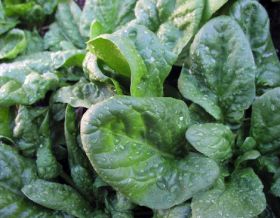
The irresistible rise of spinach
Spinach has risen by two places every year since the FPJ Big 50 Products was first published in 2015, and with the best volume growth in the whole of this year’s ranking, combined with the second-best value growth behind only avocados, expect that run to continue.
Healthy, trendy and increasingly widely available, spinach has caught the zeitgeist and is a favourite of the millennial consumer. “Spinach is popular in salads because it is extremely versatile, has a subtle, sweet flavour and complements most other salad leaves,” explains Tony Reid, head of marketing at major baby leaf spinach grower Vitacress.
“Health continues to be a big consumer driver and spinach’s health image and versatility in smoothies and salads, as well as soups and stir-fries, is another reason for its popularity.”
Branded giant Florette has also given spinach a boost by including it within its new Superfood and Energy Boost smoothie mixes, in addition to its Simply Spinach single-leaf bag and other mixes.
All of the supermarkets now carry a decent range of what was once considered a niche crop best known for its association with Popeye, and as a healthy and vogue ingredient, impressive sales figures can be expected for the foreseeable future.
42. Parsnips
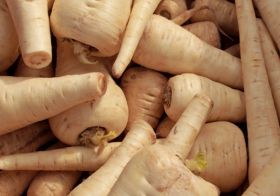
New formats could stir up parsnip sales
Parsnips’ dependence on the Sunday roast dinner means value declines have been felt harder than in carrots, which are boosted by other midweek eating occasions.
Price deflation hit a record low this year, with a bag of parsnips selling for 19p at several retailers over Christmas. “Parsnips have seen particularly deep promotions, leading to value declines. The promotional activity at Christmas was the biggest driver of deflation in the last year,” says Guy Poskitt of MH Poskitt. “We did have a mild winter, which impacts parsnip sales as people eat them at big winter meals, so the demand never came. The only real big demand was at Christmas and that was supported by promotions.”
Growth in the category must come from new usage occasions, explains category manager at Produce World, Mark Cheadle. He says: “Price deflation has been more severe than in carrots, and we’re not finding that it’s bringing new consumers in. That will be achieved through a proposition that is not to do with price.”
Stir fries could offer a potentially valuable new channel for parsnips, says Cheadle, who says they can be grated and used to add sweetness to the popular dish. “When retail communications are all around price you’re playing with existing customers, not new ones,” he says.
43. Brussels sprouts
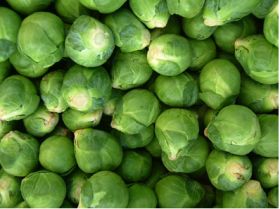
Sprout sales suffer after difficult year
Sprouts have taken a knock this year with almost six per cent volume and value declines reflecting the tough market environment for brassicas at retail. In addition, hot temperatures and a Diamondback moth problem earlier in the year have made for challenging conditions in sprout production.
But it’s not all bad news, and Chris Keenan, managing director of RK Drysdale, says his customers are projecting around seven per cent growth year on year. “Sprouts are in growth because they are increasingly being seen as a superfood. We are seeing continued growth particularly in peeled, for the convenience market, as well as shredded for use in stir fries,” he says. Sprout sales are now doing “pretty well” in summer as well as winter, says Keenan, as consumers have finally accepted other usages outside Christmas.
There are further opportunities for growth thanks to the kale-sprout hybrid Kalettes, which launched its first major marketing campaign this year. Kalettes’ owner Tozer Seeds is confident of the product’s success, with director David Rogers telling FPJ that “both sprouts and kale are already trendy in the States.”
There are green shoots of consumer interest in the sprout category but it will take a concerted effort before this turns into positive sales growth.
44. Kiwis
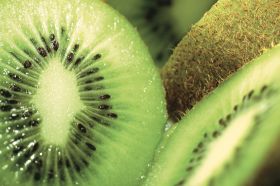
Record yields boost sales
Value: £46.7m (+4.2%) Volume: 25.2m kg (+11.2%)
After a difficult year for kiwis last time around, with price deflation denting revenues, the category has had somewhat of a resurgence over the past 12 months thanks to strong volume growth.
At Zespri, record yields and the largest-ever New Zealand crop helped boost total sales volumes from the country by 18 per cent on the previous year. Meanwhile, volumes from the company’s northern hemisphere production sites rose 14 per cent, driven mainly by SunGold coming into production in Italy.
Green kiwis are still the main seller in the UK, according to Zespri, with the company’s sales increasing by around 27 per cent on last year, predominantly driven by larger ready-to-eat fruit. “This is tapping into the trend of shoppers and consumers wanting convenient, quality products,” says UK and Ireland market manager Jayne Chamberlain, who identifies convenience as the key trend in the market.
Future growth will be driven in large part by Zespri’s SunGold variety, Chamberlain expects, with sales of the variety doubling in the past year. “With its sweeter flavour and health attributes, SunGold kiwifruit is helping to reinvigorate and add value to the category,” she says. “Current predictions are that in the next five years SunGold sales could be as high as Zespri Green kiwifruit in the UK.”
45. Pineapples
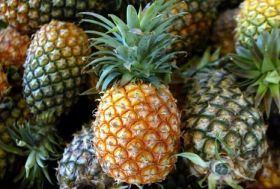
Pineapples bounce back as fruit size shrinks
Value: £41.9m (+10.1%) Volume: 57m kg (+9.1%)
Following a dramatic value sales slide of 17.7 per cent in 2015-16, pineapples have made a comeback in the past year. Toni Direito, commercial director of Compagnie Fruitiere UK, recently told FPJ there had been a shift to smaller fruit sizes, retailing at prices to attract impulse purchases. But at some retailers there is a return to bigger pineapples at higher price points.
Alongside this, the prepared convenience sector continues to grow, and demand for super-sweet product is rising, says Stephan Schneider of Dutch importer HillFresh. In line with this trend, Compagnie Fruitiere recently launched the premium Ana’dou Supreme pineapple – a variety renowned for its sweetness.
On the flip side, fluctuations in availability and exchange rates have forced retailers to consider the most efficient route to market to negate cost increases, adds Direito. But looking forward, Schneider sees opportunities for further growth if the sector can capitalise on consumers’ thirst for convenience and adopt marketing techniques used on the continent.
In the Netherlands, HillFresh has run promotions with free pineapple slicers, as well as teaming up with a slicing machine manufacturer to take away the hassle of cutting pineapple for the consumer. “How to cut a pineapple is still a big issue,” he says.



